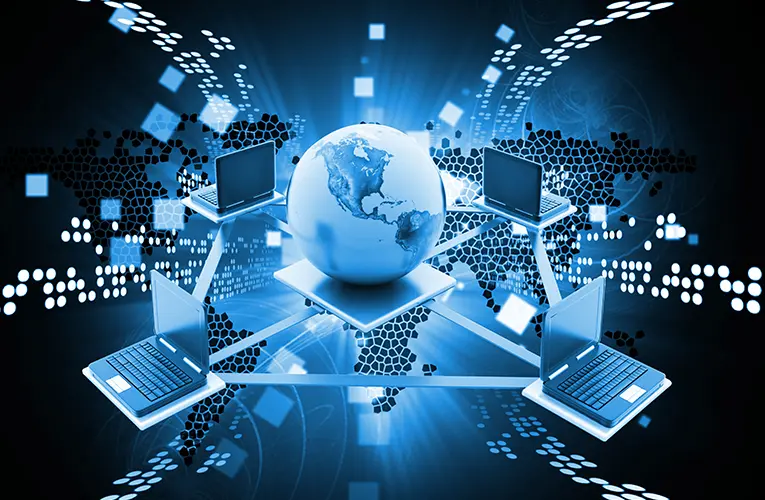“AI in Everyday Life: How AI is Changing Our World”
### “AI in Everyday Life: How AI is Changing Our World”
Artificial Intelligence (AI) has moved beyond science fiction into everyday life, transforming the way we interact, work, and make decisions. From personal assistants to smart home devices, AI is becoming an integral part of our daily routines. This guide explores how AI is changing various aspects of our world, its applications, benefits, challenges, and the future implications of these technologies.
—
### 1. Understanding AI in Everyday Life
#### **1.1 What is AI?**
– **Definition:** AI refers to the simulation of human intelligence processes by machines, especially computer systems. These processes include learning, reasoning, and self-correction.
– **Types of AI:**
– **Narrow AI:** Specialized in performing specific tasks, such as voice recognition or recommendation systems.
– **General AI:** Hypothetical AI with the ability to understand, learn, and apply intelligence across a wide range of tasks, similar to human capabilities.
#### **1.2 Integration into Daily Activities**
– **Personal Assistants:** AI systems that help manage daily tasks, such as scheduling, reminders, and information retrieval.
– **Smart Devices:** Technology that automates and controls home environments, such as lighting, heating, and security systems.
—
### 2. AI Applications in Everyday Life
#### **2.1 Personal Assistants**
– **Examples:**
– **Voice Assistants:** Siri, Google Assistant, Alexa.
– **Functionality:** Manage schedules, answer queries, control smart home devices, and perform tasks through voice commands.
– **Benefits:**
– **Convenience:** Hands-free management of tasks and information retrieval.
– **Accessibility:** Assistive technology for individuals with disabilities.
#### **2.2 Smart Homes**
– **Examples:**
– **Smart Thermostats:** Devices like Nest or Ecobee that learn user preferences to optimize home heating and cooling.
– **Smart Security Systems:** Cameras and alarms that use AI for surveillance and alerting.
– **Benefits:**
– **Energy Efficiency:** Automated adjustments to reduce energy consumption.
– **Enhanced Security:** Real-time monitoring and alerts for increased home safety.
#### **2.3 Healthcare**
– **Examples:**
– **Diagnostic Tools:** AI algorithms for analyzing medical images, such as X-rays and MRIs.
– **Virtual Health Assistants:** Chatbots and apps that provide health information and support.
– **Benefits:**
– **Early Detection:** Improved accuracy in diagnosing diseases and conditions.
– **Personalized Care:** Tailored treatment recommendations based on individual health data.
#### **2.4 Transportation**
– **Examples:**
– **Navigation Systems:** AI-powered apps like Google Maps that provide real-time traffic updates and route optimization.
– **Autonomous Vehicles:** Self-driving cars and delivery robots.
– **Benefits:**
– **Efficiency:** Reduced travel time and optimized routes.
– **Safety:** Potential reduction in accidents and traffic-related issues.
#### **2.5 Retail and Shopping**
– **Examples:**
– **Recommendation Systems:** Personalized product suggestions based on browsing and purchase history.
– **Chatbots:** Virtual assistants that help with customer service and support.
– **Benefits:**
– **Enhanced Shopping Experience:** Personalized recommendations and streamlined customer service.
– **Increased Convenience:** Faster and more accurate search and purchase processes.
#### **2.6 Entertainment and Media**
– **Examples:**
– **Content Recommendation:** Algorithms that suggest movies, music, and articles based on user preferences (e.g., Netflix, Spotify).
– **Content Creation:** AI tools that assist in generating music, art, and writing.
– **Benefits:**
– **Personalization:** Tailored content that aligns with individual tastes.
– **Creativity Enhancement:** Tools that aid in creative processes and content generation.
—
### 3. Benefits of AI in Everyday Life
#### **3.1 Improved Efficiency**
– **Time-Saving:** Automation of repetitive tasks and optimized processes.
– **Resource Management:** Efficient use of resources through smart systems and predictive algorithms.
#### **3.2 Enhanced Personalization**
– **Tailored Experiences:** Customized recommendations and services based on individual preferences and behaviors.
– **Adaptive Learning:** Systems that adjust to user needs and improve over time.
#### **3.3 Increased Accessibility**
– **Assistive Technologies:** Tools that support individuals with disabilities and improve their quality of life.
– **Remote Services:** Access to services and information from anywhere through AI-powered platforms.
#### **3.4 Better Decision-Making**
– **Data-Driven Insights:** AI provides valuable insights and analytics to support informed decision-making.
– **Predictive Capabilities:** Anticipation of future needs and trends based on data analysis.
—
### 4. Challenges and Considerations
#### **4.1 Privacy and Security**
– **Data Privacy:** Concerns about the collection, storage, and use of personal data by AI systems.
– **Cybersecurity:** Risks associated with AI systems being targeted by malicious attacks.
#### **4.2 Bias and Fairness**
– **Algorithmic Bias:** The risk of AI systems perpetuating existing biases and inequalities present in data.
– **Fairness:** Ensuring AI systems are designed and implemented fairly across diverse populations.
#### **4.3 Dependency and Reliability**
– **Over-Reliance:** Potential issues arising from excessive dependence on AI systems for critical tasks.
– **System Failures:** Risks associated with AI system errors or malfunctions.
#### **4.4 Ethical Implications**
– **Decision-Making:** Ethical considerations regarding AI decisions and their impacts on individuals and society.
– **Transparency:** The need for clarity in how AI systems make decisions and operate.
—
### 5. The Future of AI in Everyday Life
#### **5.1 Evolving Technologies**
– **AI Integration:** Continued integration of AI into new areas of daily life and emerging technologies.
– **Advancements:** Progress in AI capabilities, such as more sophisticated natural language processing and improved machine learning algorithms.
#### **5.2 Societal Impact**
– **Changing Job Landscapes:** The evolving nature of work and the need for new skills in an AI-driven world.
– **Ethical Considerations:** Ongoing discussions about the ethical use and regulation of AI technologies.
#### **5.3 Human-AI Collaboration**
– **Augmented Intelligence:** Combining human creativity and intuition with AI’s analytical capabilities for enhanced outcomes.
– **Symbiotic Relationships:** Developing AI systems that complement and enhance human abilities rather than replace them.
—
### 6. Conclusion
– **Summary:**
– AI is increasingly becoming a part of everyday life, offering numerous benefits in efficiency, personalization, and accessibility while also presenting challenges related to privacy, bias, and dependency.
– **Encouragement:**
– Embrace the advancements AI brings while remaining mindful of its ethical implications and potential impacts. Stay informed and engaged with how AI is evolving and how it can be used responsibly.
– **Call to Action:**
– Explore the ways AI can enhance your daily life, be proactive in understanding and addressing its challenges, and contribute to discussions about the responsible development and use of AI technologies.
—
This guide provides a comprehensive overview of how AI is changing everyday life, highlighting its applications, benefits, challenges, and future prospects. Understanding these aspects helps individuals and organizations navigate the evolving landscape of AI and harness its potential while addressing its ethical and practical implications.










